Here you'll learn about and recognize succulents and cacti that become weedy, invasive nuisances if you make them too happy, and what to do about them. Keep in mind---as I explain elsewhere on this site---that your region, your garden's microclimates, and the time of year make a big difference as to which succulents are ideal or pose potential problems.
Avoid weedy succulents
Controlling invasive succulents can be as simple as not growing them to begin with. (How do you know which ones? Well, keep reading!) Unlike annual weeds---those that sprout in spring and are suddenly everywhere---most succulents are perennials.
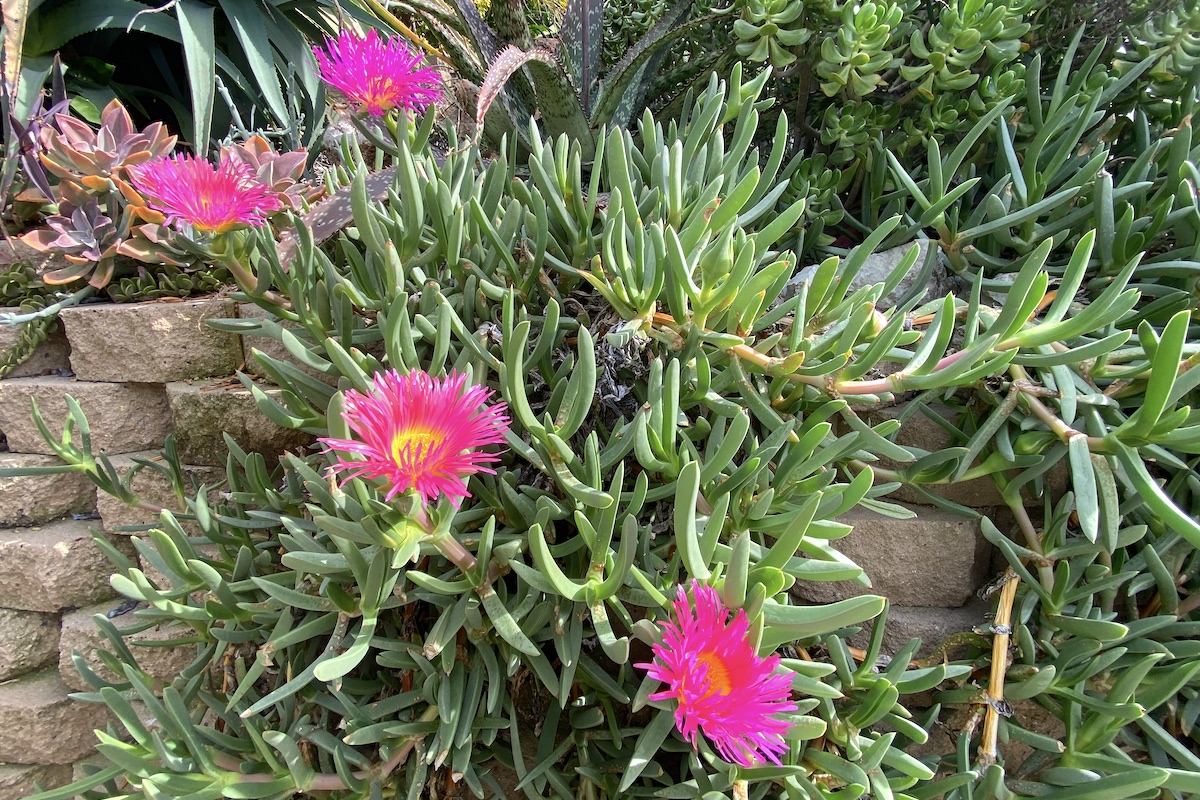
Carpobrotus edulis (pickleweed, ice plant), planted extensively by CalTrans on freeway embankments, is native to South Africa. It's invasive along coastal California, causing instability of fragile bluffs.
Like all plants, succulents bloom, but not necessarily annually. When they do flower, most don't send forth a lot of seeds. Nor do the seeds always sprout (most don't).
A "Good" Succulent Weed
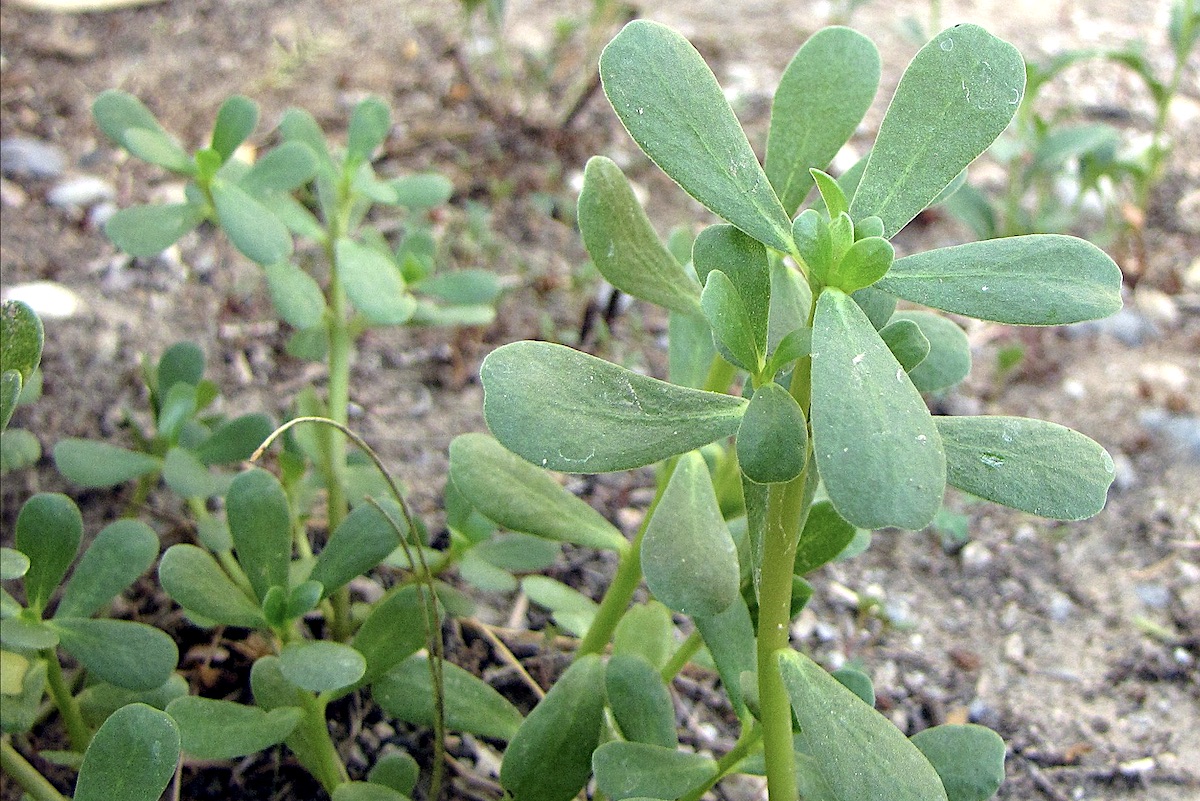
Purslane is a succulent weed worth having.
Purslane (Portulaca oleracea) is both a vegetable and an annual weed. The taste is similar to watercress, so use it as you might spinach or lettuce. It's loaded with vitamins, minerals and antioxidants, and is higher in Omega-3 fatty acids than other greens. I occasionally run across it when weeding my garden, so do watch for it in yours. Or start it from seed. Use it as an ornamental filler for succulent container gardens, hanging pots and window boxes. Discover more edible succulents.
Unwanted pups: What to Do
Succulents that spread by underground runners---roots that grow parallel to the soil, just under the surface---produce clones that turn green (photosynthesize) when breaking into sunlight. Parent roots, similar to umbilical cords, feed the offspring until they're established.
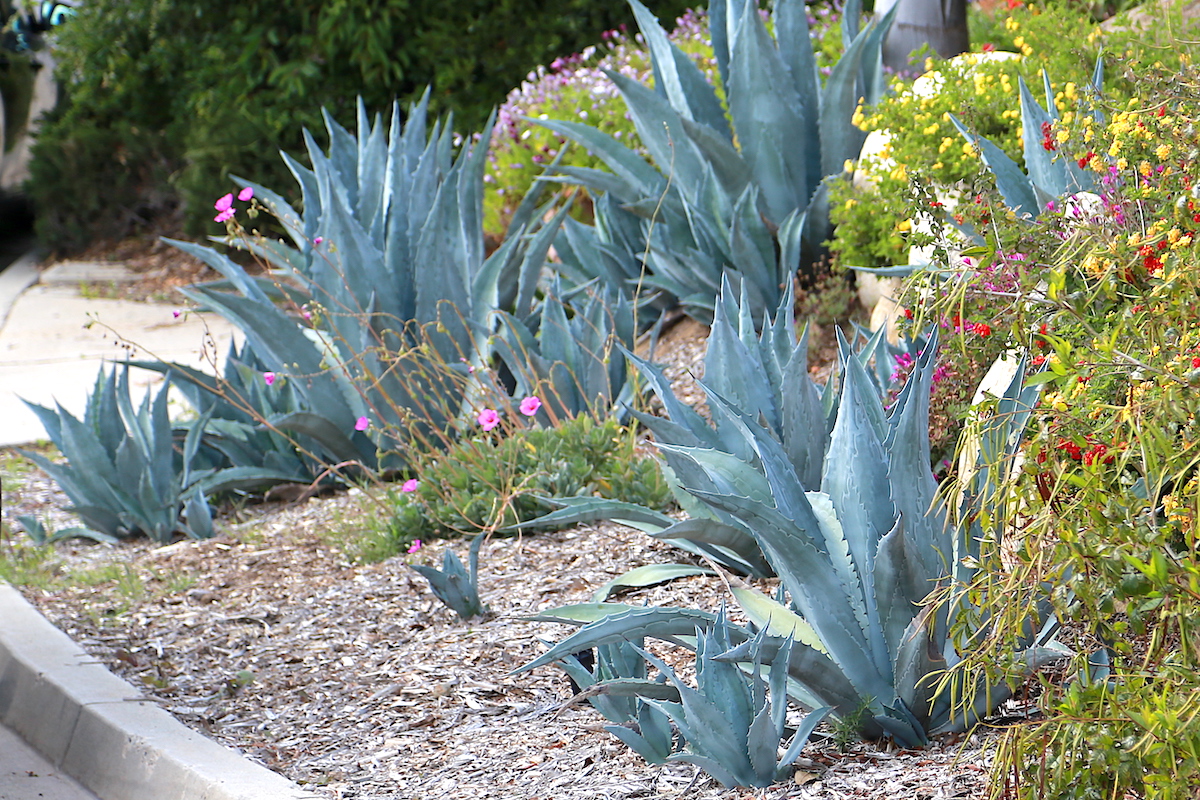
Agave americana attempts to take over a streetside landscape
Pups of small succulents such as haworthias and dwarf agaves are seldom a problem, in fact, welcomed.
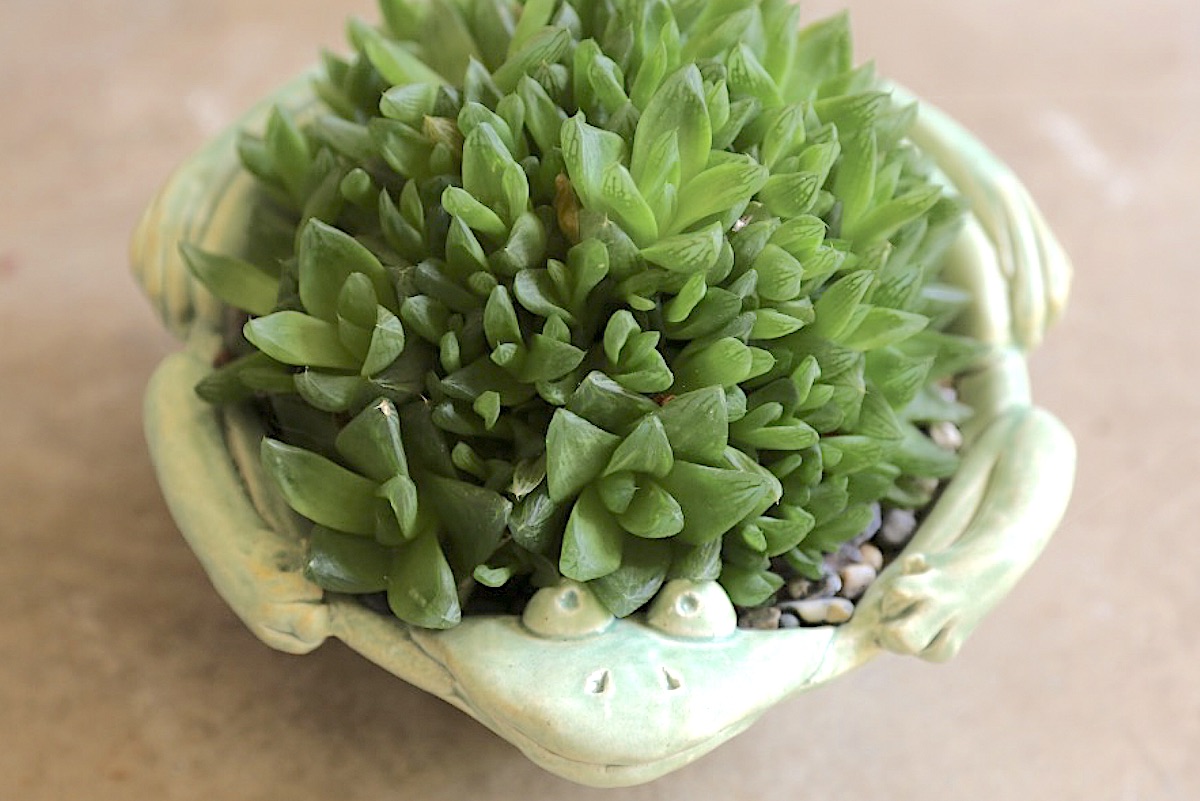
Haworthia retusa spread to fill a frog pot. Yay!
However, pups of large succulents have to be dug up if unwanted. This tends to be typical of large agaves.
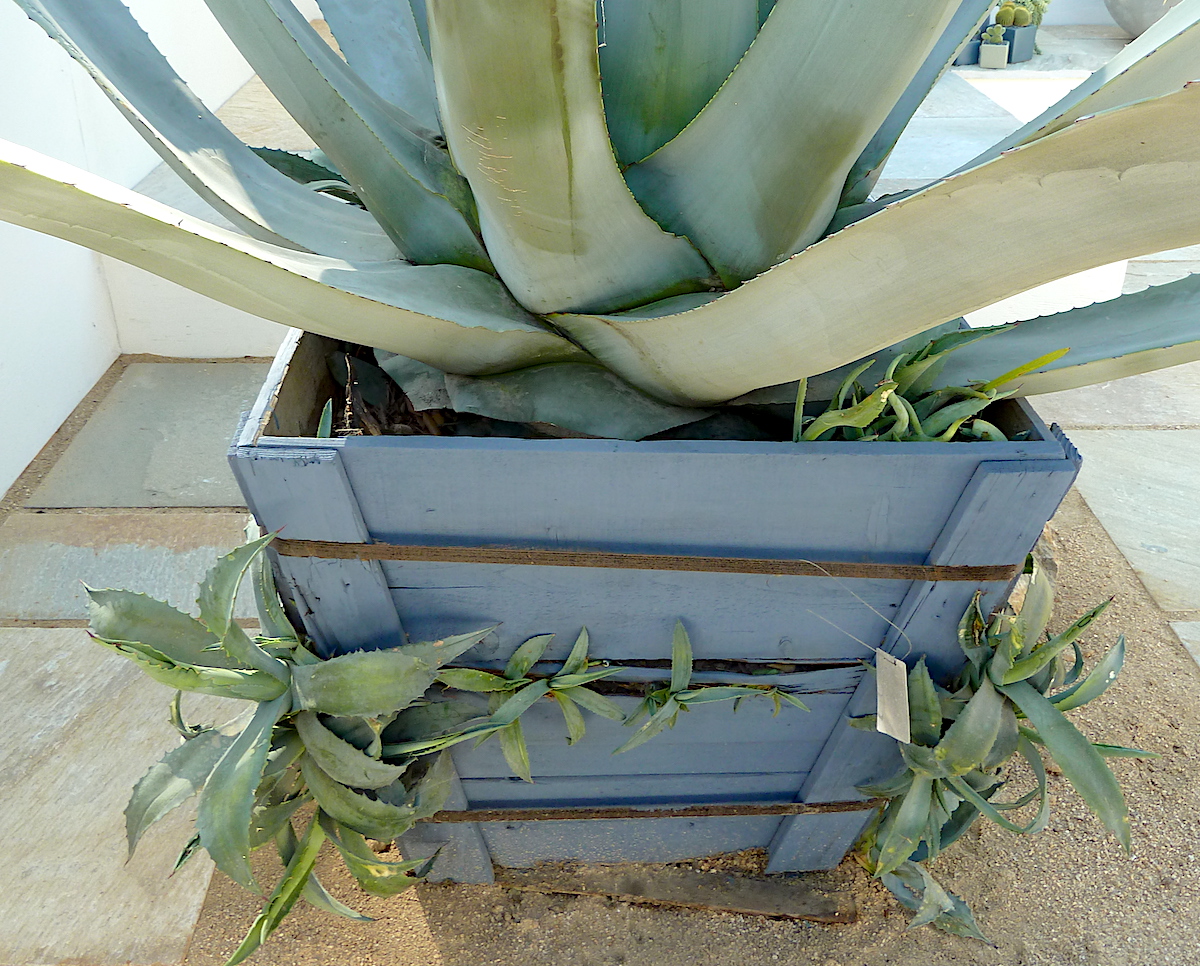
Agave americana pups eager to escape from a pot
Like a protective mama bear, a mother agave has claws---thorny spikes along leaf margins. These make it challenging to remove offspring beneath Mom's leaves. Don't delay pup removal; all too soon they're big enough to fight back.
Most agaves pup. Among those less prone to do so are Agave victoriae-reginae, Agave 'Blue Glow', Agave guiengola, Agave ovatifolia, and Agave 'Sharkskin'. Learn more about agaves on this site and in my YouTube video: Agave Essentials and Essential Agaves.
Meet an invasive aloe
A common aloe that propagates by underground runners is Aloe maculata (formerly A. saponaria). About a year after planting it in a flower bed, I found pups three feet away. The soil was soft and friable, so I'd grab a pup, pull on it, and along with it came a long lateral root.
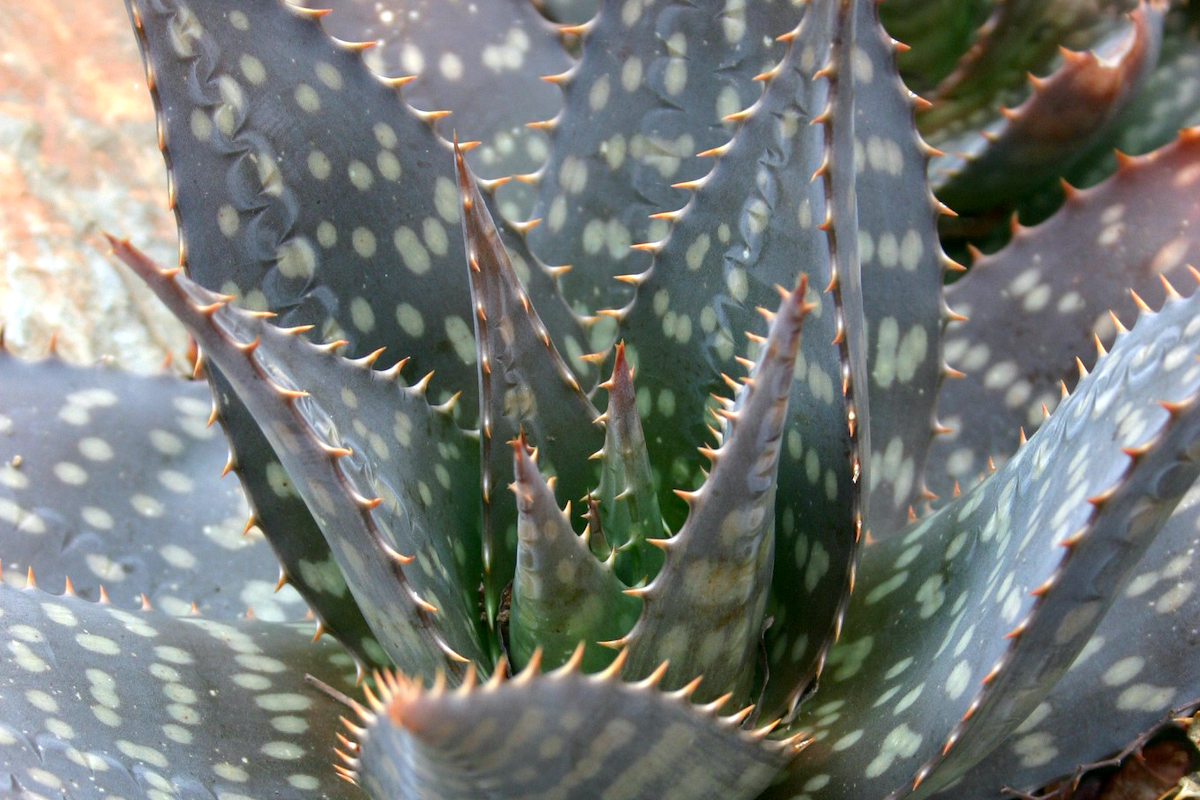
Aloe maculata (saponaria)
I moved the colony to a less hospitable part of the garden with native soil (clay and decomposed granite). They've been there ever since, spreading more slowly. Because they're free for the asking and not especially attractive (except in bloom) I refer to them as "trash aloes."
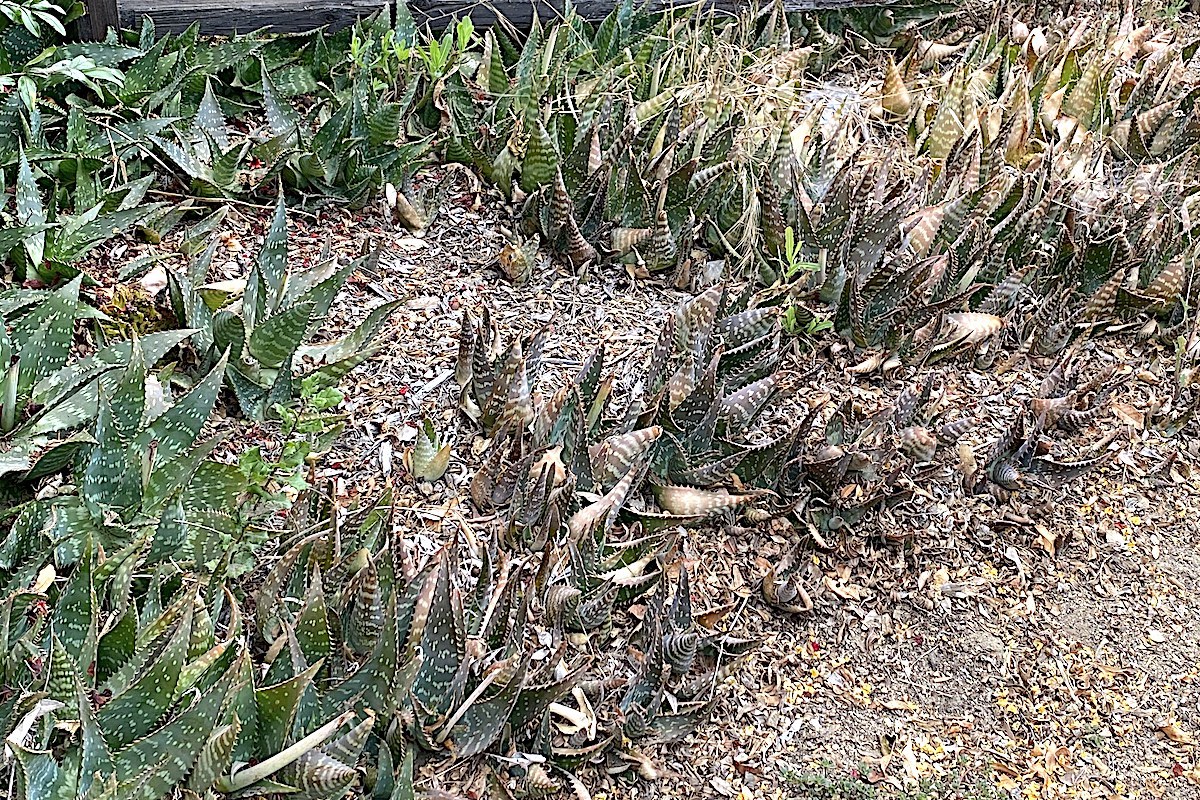
Aloe maculata (Aloe saponaria) is one of the few midsized aloes that spreads via underground runners
Too many offsets?
Fairy crassula (Crassula multicava) grows offsets (baby plants) on its flower spikes. I produced an article and video about it a few years ago: Grow Shade-Loving Fairy Crassula: A Succulent Ground Cover You'll Love.
A recent comment on my You Tube channel surprised me, but perhaps it shouldn't have:
Tiny plants on flower spikes form in winter. As these grow, ever-lengthening stems lower plantlets to the ground. If they land on good soil, they may take root.
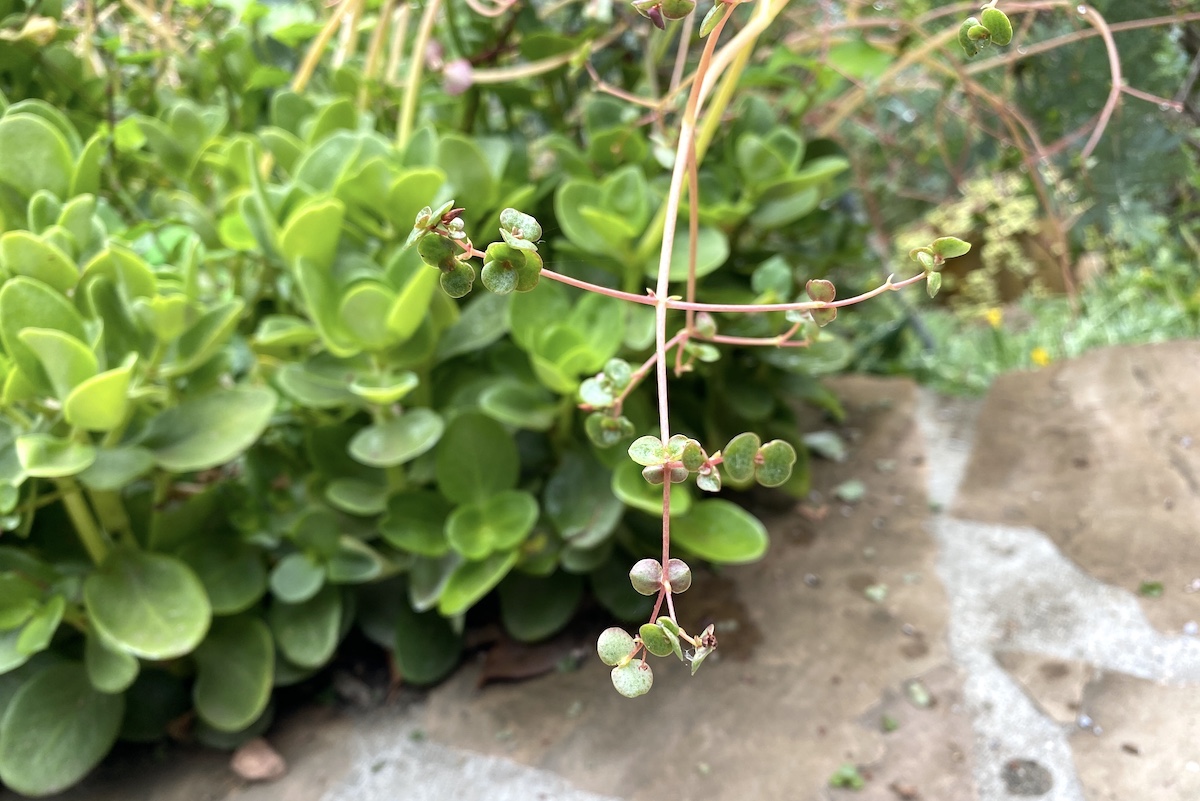
Fairy crassula (Crassula multicava). Tiny plants grow on flower stems.
It's a brilliant strategy: The offspring---now a foot or so from their parents---don't compete for light or nutrients. Hence, a fairy crassula colony has the potential to spread endlessly.
Mother-of-millions kalanchoe
Like fairy crassula, these produce plantlets that fall off and root. Unlike fairy crassula, which produces plantlets on flower spikes, those of mother-of-millions fringe the leaves.
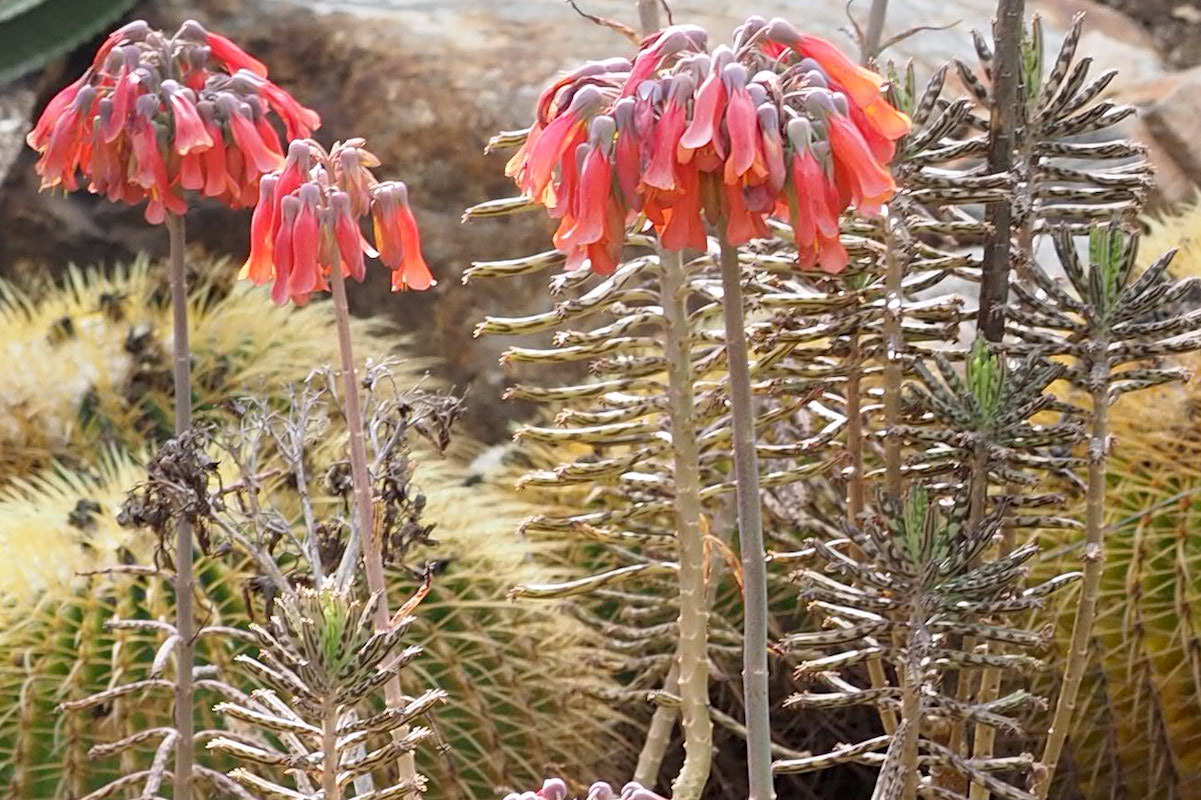
Kalanchoe delagoensis (tubiflora) is not a weed in my garden, alas.
Tall, pendant, tubular orange-red flowers are a bonus that makes the plants' weedy quality worthwhile (especially for those of us who have trouble growing them). Typical of kalanchoes, they prefer a maritime climate.
Succulents that break apart and root
Stem succulents start readily from cuttings, but most don't fall apart in order to do just that. These cacti are prized in some regions, reviled in others:
Cholla cactus
Eve's needle (Opuntia subulata or Austrocylindropuntia subulata) is my least favorite succulent---possibly my least favorite plant. It grows vigorously, isn't choosy about soil or other conditions, and falls apart if someone sneezes 10 feet away.
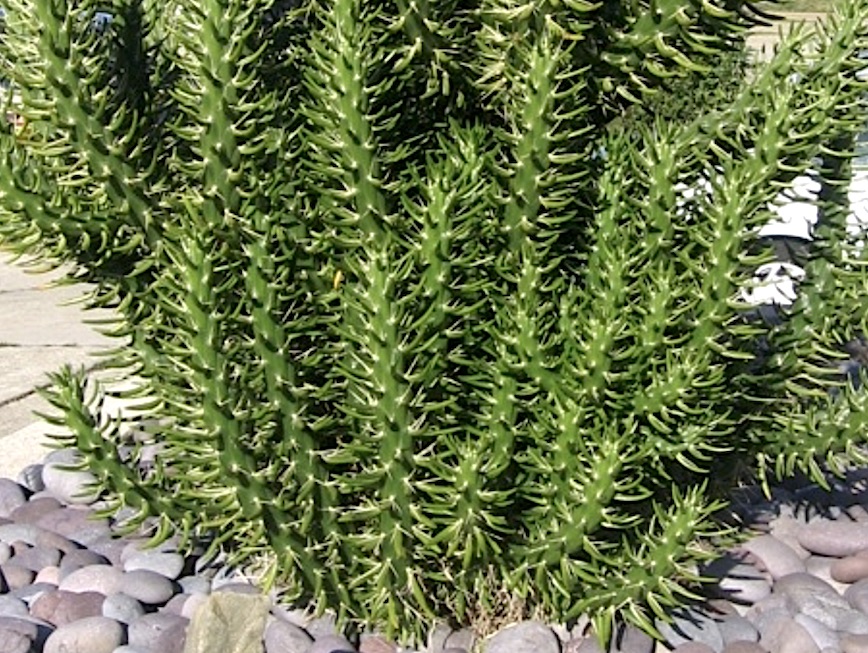
Eve's needle Opuntia subulata (Austrocylindropuntia) in a residential garden
Eve's needle has vicious, concealed, hooked spines that latch on to anything they can, thereby traveling with the victim and leapfrogging the colony. This is what chollas do---a common name is "horse cripplers," but Eve's needle is especially happy west of its native desert habitat. Unwitting homeowners have spread it throughout Southern California.
If you see Eve's needle in a nursery, don't buy it. If you own a nursery, please don't sell it. If you already have it, get rid of it; all too soon, it'll be tapping on your windows.
Opuntia (paddle) cactus
The many species of Opuntia have in common pads shaped like ping-pong paddles that grow and spread from each another. Each pad is capable of rooting where it falls, not merely from the point it had been attached, but also from any of its areoles (growth tissue at the base of spines).
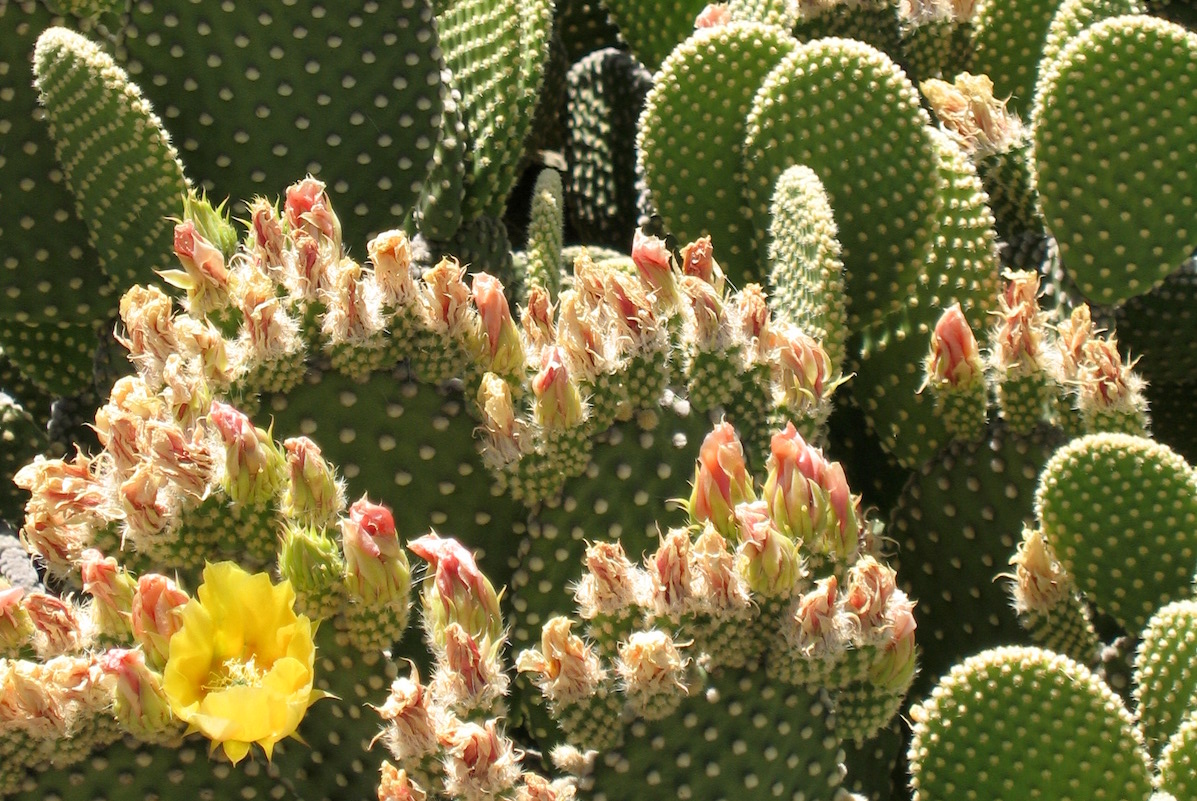
Opuntia macrodasys, sweetly labeled in US nurseries "angel wings" and "bunny ears," is "blind cactus" in Australia. Cattle that consume it go blind after getting its tiny glochids in their eyes.
Native to the desert Southwest and Mexico, opuntia has many uses, from edible nopales to security fencing, so there are "pro's" to its "cons." However, some species are causing major problems in Australia, where no cacti are native. I found an interesting list of those that are harming Australia's economy and therefore are illegal to sell or own, on the Queensland Government site.
Euphorbia tirucalli 'Sticks on Fire'
It distresses me to include a gorgeous succulent, but this one has outworn its welcome. Specimens that start out manageable grow too large, then endanger owners and gardeners attempting to trim or remove them.
Milky sap that drips freely is sticky, caustic, and can send people to the hospital, especially if they get it in their eyes.
Yet, as noted earlier, one person's weed is another's treasure. This YouTube comment-question puts it into perspective:
Yuccas
You don't see yuccas springing up in gardens where they weren't planted. These super tough succulents do the opposite: Sit quietly in situ and grow and grow.
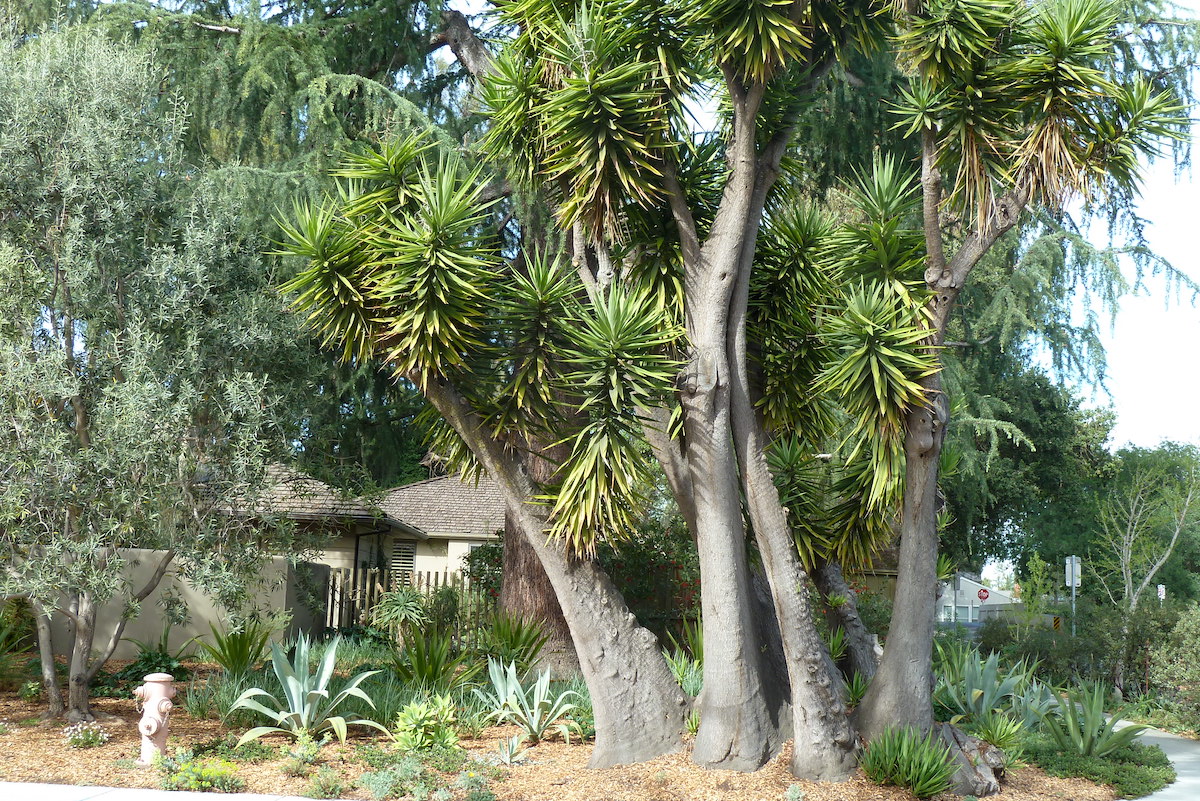
Immense yucca in a residential landscape
After a decade or so, their swollen bases may encroach upon and split the seams of walls, terraces or (God forbid) pipes and your home's foundation. I have no idea how old the magnificent Bay Area specimen is in the photo, but I'm guessing it was planted well over a generation ago. Hopefully it won't cause trouble; it seems far enough away from the house behind it.
Know of a weedy succulent I haven't included? Do tell us about it in a comment below. And I'd be grateful to know your own experiences with any mentioned above!
Related Info on This Site
Dangerous Succulents: Grow with Caution
Before planting spiny succulents, weigh the pros and cons. Although they have a certain beauty, they can be dangerous and devilishly difficult to remove. Know how large one gets and position it where it can’t harm you, kids, pets, or passersby.
25 Succulent Mistakes and Solutions
My what-not-to-do’s are simple to avoid, but not necessarily easy to remedy. A smart succulent owner learns what can be expensive to fix, might cause prized plants to look dreadful, and could even kill them.
How to Prune and Handle Euphorbia tirucalli ‘Sticks on Fire’
In both English and Spanish, landscaper José Arias explains and shows how to prune and handle Euphorbia tirucalli ‘Sticks on Fire’, a beautiful succulent with toxic, milky sap.
Agave Dermatitis: How harmful is agave sap? Are you susceptible?
You’re already wary of poison oak, cactus glochids and the milky sap of euphorbias. Add agave sap to the list. In susceptible individuals, it causes the skin condition “agave dermatitis.”
The post Recognize and Avoid Weedy Succulents appeared first on Debra Lee Baldwin. Copyright © Debra Lee Baldwin.
from Debra Lee Baldwin https://ift.tt/6J7Flkh
via IFTTT

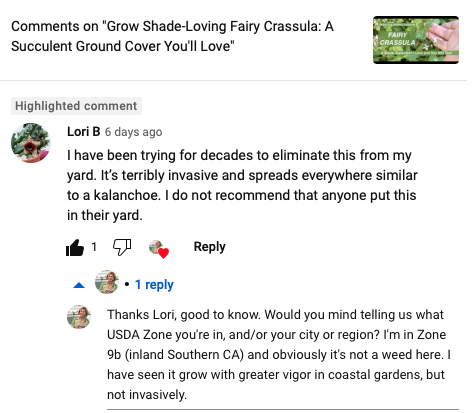
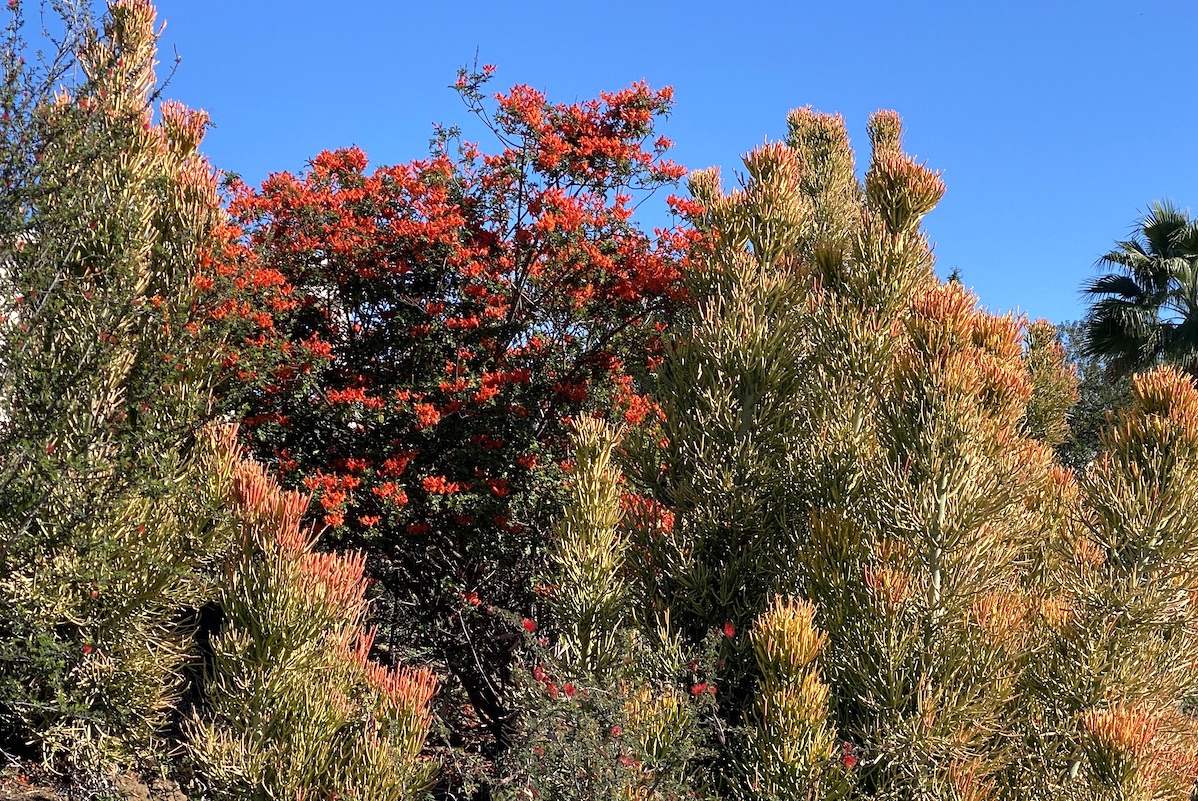
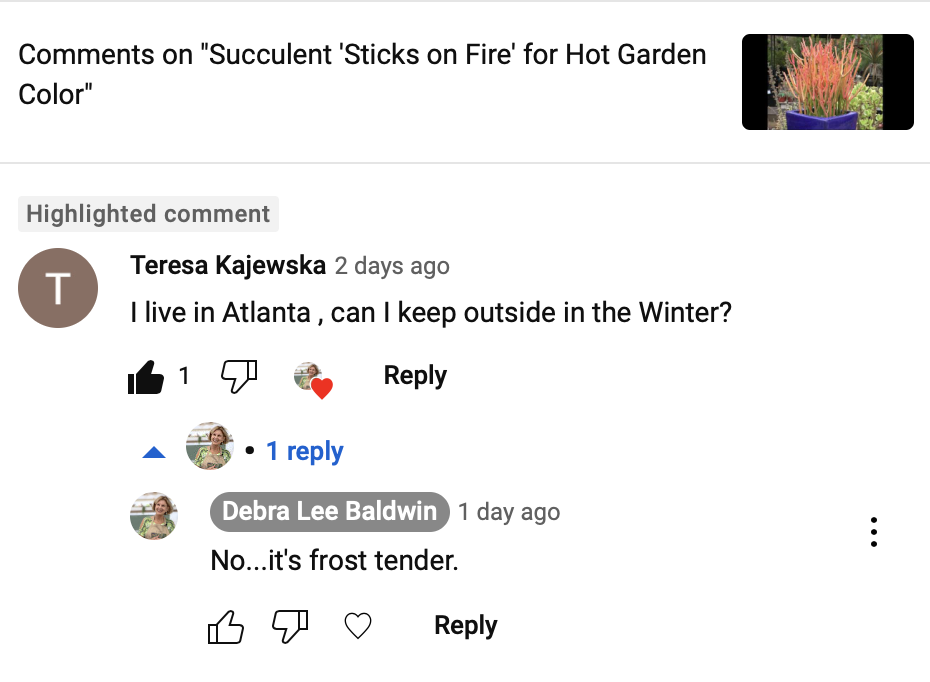
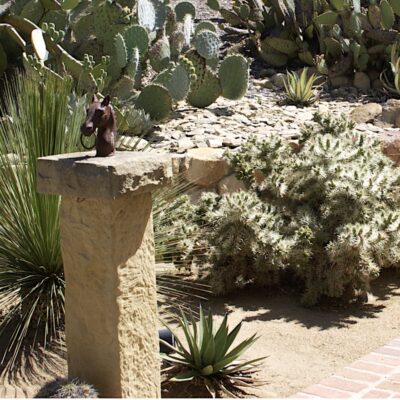
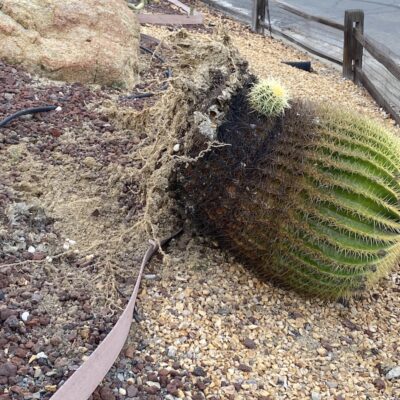
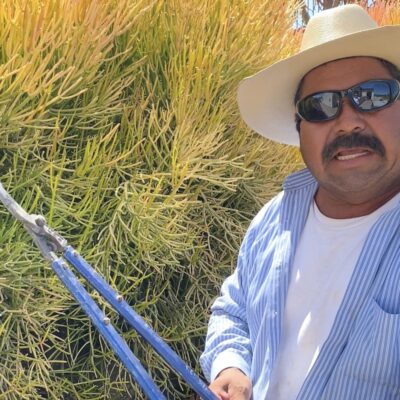
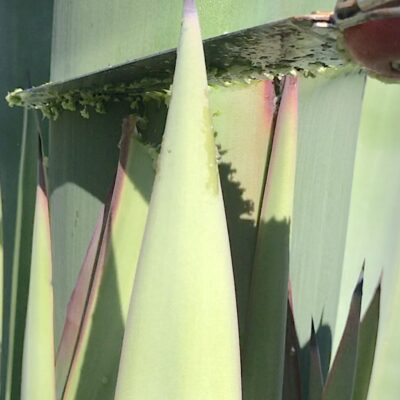
No hay comentarios:
Publicar un comentario